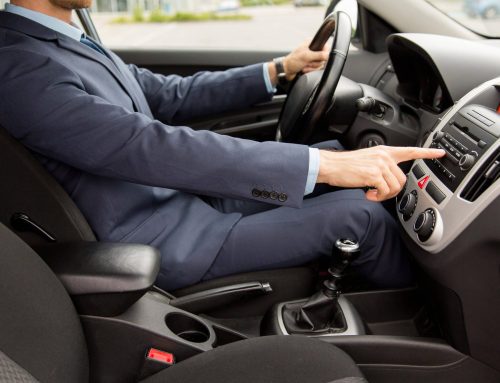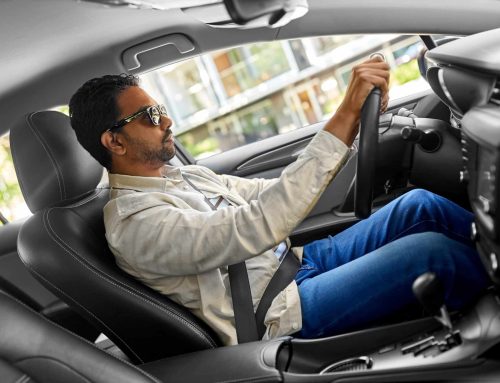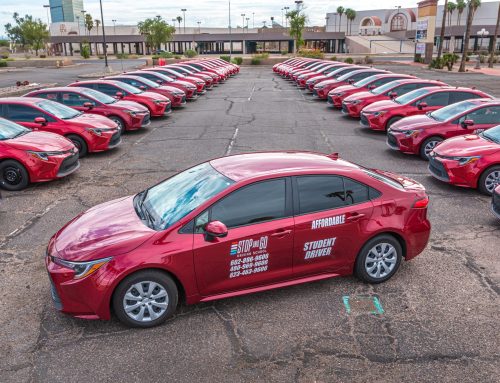Cutting Edge Protection: Car Safety Features Then & Now
When it comes to staying safe on the road, it’s hard to believe that some of the features we take for granted today weren’t always there. In this blog, we’ll take a look at how car safety features have evolved from basic seat belts to advanced driving systems and discuss the latest technologies shaping automotive safety today.
A Brief History of Car Safety
One of the earliest safety milestones was also one of the most revolutionary: the seat belt. It’s hard to imagine now, but there was a time when this essential feature wasn’t standard in cars. Volvo was the first to introduce the modern three-point seat belt in 1959, and it took until the 1980s and 1990s for seat belt laws to become widespread. Today, seat belts continue to save countless lives.
Safety glass is another early innovation that revolutionized car safety. In the 1920s, laminated glass replaced standard glass, which shattered into dangerous shards. Laminated glass held together upon impact, reducing the risk of injury from flying glass during accidents.
Airbags, first invented in the 1950s, quickly became a crucial component of vehicle safety. Initially only available in a limited number of vehicles, they became more common in the 1980s and 1990s as their effectiveness in reducing fatalities and serious injuries improved.
While airbags were being invented, Mercedes Benz engineer Béla Barényi was pioneering the concept of crumple zones. By allowing specific parts of the car to deform upon impact, crumple zones reduce the force transmitted to the occupants, significantly decreasing the risk of injury. This innovation has become a standard feature in modern cars and continues to play a vital role in vehicle safety.
In the 1970s, the third brake light was introduced, providing an additional signal to alert drivers behind you when you’re stopping. This simple yet life-saving feature has significantly reduced rear-end collisions by improving the visibility of braking actions.
Today’s Advanced Car Safety Features
Fast forward to today, and car safety features have become incredibly advanced. These technologies act almost like a co-pilot, assisting drivers in making safer decisions on the road.
Advanced Driver Assistance Systems (ADAS)
ADAS includes a range of technologies designed to enhance driver safety, from adaptive cruise control to lane departure warnings. Automatic emergency braking, one of the most important ADAS features, can stop the car to avoid a collision if the driver doesn’t react in time.
Blind Spot Detection
Blind spot detection systems use sensors to monitor areas around the car that the driver cannot see. If a vehicle is detected in the blind spot, the system alerts the driver, usually with a visual warning or an audible alert.
Rear-View Cameras & Parking Sensors
Rear-view cameras, now mandatory on all new vehicle models in the U.S., provide a clear view of what is behind the car when reversing. Parking sensors complement these cameras by providing audible alerts when the car approaches an obstacle.
Electronic Stability Control (ESC)
Another mandatory feature in new cars, ESC helps prevent skidding and loss of control by automatically applying brakes to individual wheels and reducing engine power, keeping your vehicle on its intended path.
Pedestrian Detection
Pedestrian detection systems use cameras and sensors tp identify the movements of people nearby. If a potential collision is detected, the system can alert the driver and even apply the brakes automatically if the driver does not respond in time.
Traditional Safety Innovations
Even the “classic” safety features have become more sophisticated. Airbags now include multi-stage deployment, meaning they adjust based on crash severity to provide the best protection. Seat belts have been enhanced with pre-tensioners and load limiters to work seamlessly with airbags for maximum safety.
Car safety features are essential, but so is knowing how to utilize these features effectively. Enroll in our comprehensive driver’s education course to learn the skills you need to drive confidently and safely!








